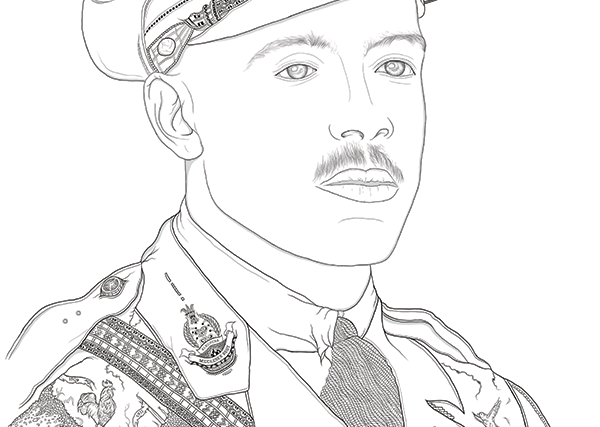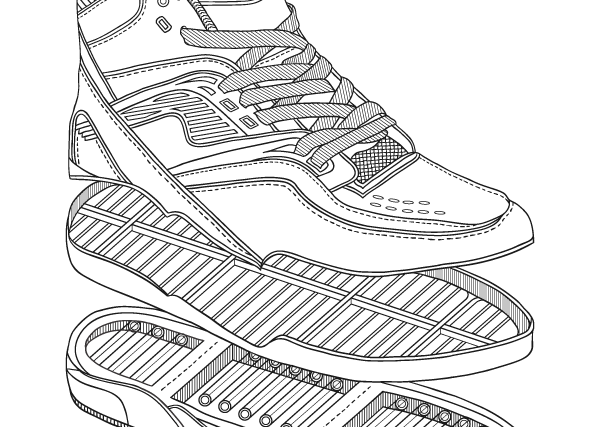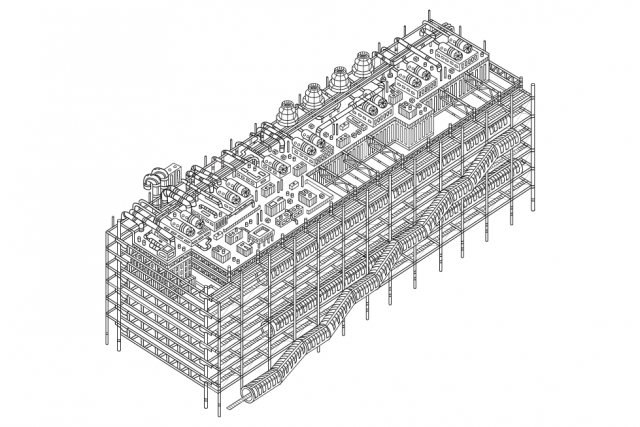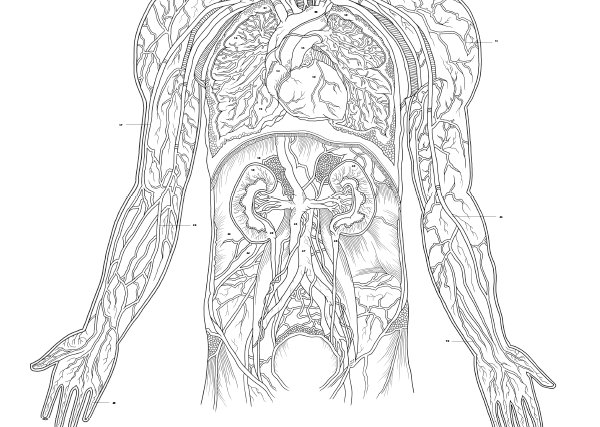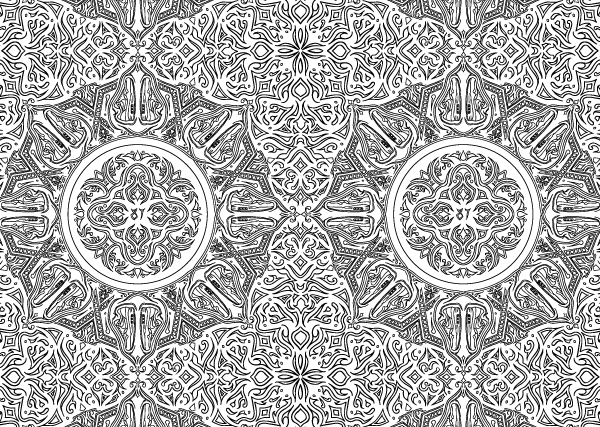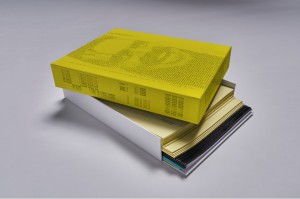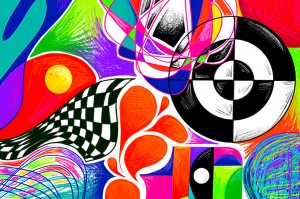Artist of the Month: Malik Thomas
The devil is in the detail: our new Artist of the Month is as skilled at intricate architectural drawing as he is at sensitively rendered portraits. Laura Robertson catches up with the young designer at his current solo exhibition to find out more about his practice, influences and work ethic…
The first thing that strikes you about graphic artist and designer Malik Thomas’s work is just how refined it is. Having been highlighted by his tutors as a ‘one to watch’, we met at his graduation show last year at the Liverpool School of Art and Design (Liverpool John Moores University). His Pompidou drawing loomed large: an intricate black and white depiction of the parisian art gallery, incredibly detailed, and printed on a 6ft board. Here were all the pipes, escalators and air-ducts, the glorious inside-out architecture, as we’d never seen it before.
This huge drawing was part of a wider project called The Cult of The Training Shoe — a beautiful hardback book on the history, science, evolution and downright idolisation of trainers. Nearby, ridiculously detailed Anatomy drawings were displayed in glass vitrines.
As Thomas himself admits, he puts fine contrast — often working in black and white lines — and attention to detail at the forefront of his practice. Thomas’s work is really good — polished, quiet and carefully considered — the result, we came to discover, of a serious work ethic and a love of research.
It’s probably not surprising that this hardworking young designer has had an unusually successful post-university year. Working with a few high profile clients — including the UCAS event Design Your Future – he tells us: “It’s not easy being a graduate, but I think it’s important to stick at it and keep making work, even if you’re not getting paid. I believe that you only get back from what you put in.”
Which is exactly the attitude that bagged him a residency and solo exhibition recently at the National Football Museum, Manchester. Hand-picked by curator John O’Shea during a university project set by the museum, O’Shea challenged Thomas to work closely with their collections team. Specifically, Thomas had to research and respond to 10 key figures featured within the third floor Greater Game exhibition, “which looks at some of the forgotten stories and myths to do with football and World War One.” The result is currently on display: a small and poignant exhibition that aims, as Thomas puts it, “to show a different perspective on football and bring forward some of the personal stories that are often overlooked.”
One such story is that of Tottenham player Walter Tull, who was the second person of mixed race to play in the top division of the Football League, and the first to be commissioned as an infantry officer in the British Army. Thomas depicts his childhood home, sports career and eventual death in 1918; killed in action at the age of 29. His body was never recovered. Although mentioned in dispatches for ‘gallantry and coolness’ whilst leading his men on a raiding party into enemy territory, Tull was never formally awarded for his bravery. Thomas has added a peace dove carrying a small Victoria Cross to the portrait; a quiet act of recognition.
In continuing his residency at the National Football Museum, you can expect to see more of Thomas’s work in a new upcoming exhibition on technology’s role within football. Watch this space.
When asked about his influences, he cites Studio Muti – “They produce graphics that seem to cross boundaries between disciplines, which is something I really admire” — as well as information graphics and technical diagrams — “I find it interesting to see how different objects and messages are presented visually so that the average person can understand them”. Thomas has found himself naturally drawn to the field of graphic design.
“Two of my main interests have always been technology and art so I think it came naturally to want to study design. There’s something enjoyable about turning one of your ideas into a visual and actually creating it from scratch.
“I remember being in school and buying those Computer Art’s magazines that came with a disc full of tutorials and I was hooked. It really opened my mind to what could be achieved by using digital tools to produce work.”
We think it’s apparent that his process usually starts off on paper, by hand; in producing a hand-drawn sketch, which is then scanned in and worked on digitally, the end result is a clean, black and white final image that somehow retains a fluidity of line and mark-marking whilst avoiding any feeling of sterility.
We wonder: what’s the best piece of design advice you’ve had so far? ”When approaching a project always be true to yourself. If you’re making a piece of work because you think that someone else will like it then it can come across as insincere. I think it’s important to keep this in mind when making an image so you don’t get carried away. I try to make work that’s authentic to my own practice.”
Laura Robertson
See more of Malik Thomas’s work at malikthomas.co.uk
See Thomas’s residency exhibition, as part of The Greater Game: Football and the First World War, at the National Football Museum, Manchester, until 6 September 2015 — ÂŁ1 admission charge for adults

